The Unsubstantial Air
This "terrific book," by Sam Hynes who spent WWII as a marine pilot, is written with personal knowledge of what it was to be young and learning to fly, and of the gains and losses that combat flying brings to those who engage in it.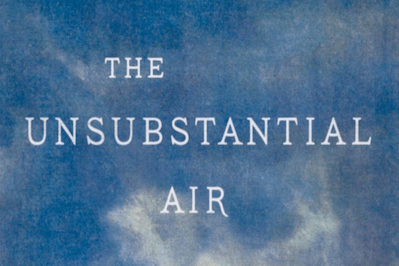 Photo by Farrar, Straus and Giroux
Photo by Farrar, Straus and Giroux
Photo by Farrar, Straus and Giroux
|
To see long excerpts from “The Unsubstantial Air” at Google Books, click here. |
“The Unsubstantial Air: American Fliers in the First World War” A book by Samuel Hynes
In 1917, a student at the Virginia Polytechnic Institute named Josiah Rowe enlisted in the Air Service and went to the School of Military Aeronautics at Princeton University. In October he started to keep a diary, one excerpt from which Samuel Hynes quotes in “The Unsubstantial Air.” It was written while Rowe’s unit made the sea crossing to Europe and the war:
“The attitude of the men and officers on board certainly presents an interesting study in psychology. With few exceptions, they seem to look upon this expedition as a frolic — more of a sight-seeing tour than, as it really is, a fight to the death with the Germans. Some appear to think more of matters of dress and plans for joy parties in Paris than they do of the more grim aspects of war.”
That light-hearted attitude was common among the newly minted aviators. A disproportionate number of them came from the Ivy League and other elite colleges and could have been characters out of the early fiction of F. Scott Fitzgerald. Indeed, Hynes quotes a conversation between Amory Blaine, the protagonist of Fitzgerald’s first novel, “This Side of Paradise” (1920), and his friend Thomas Parke D’Invilliers. “Infantry or aviation,” Amory says. “I can’t make up my mind — I hate mechanics, but then of course aviation’s the thing for me –.” To which Tom replies, “Infantry or aviation — aviation sounds like the romantic side of the war, of course — like cavalry used to be, you know.” Hynes adds: “Tom was right: by the time the United States entered the war, aviation had become the romantic choice of undergraduates. That’s not surprising; the air war had produced the best stories, the ones that got into newspapers and magazines and stirred the hearts of college men: personal stories, with heroes.”
Hynes knows whereof he writes. He knows colleges, Ivy League ones specifically, because he has spent his career teaching in them and is now Woodrow Wilson Professor of Literature Emeritus at Princeton. He knows flying because he spent World War II as a marine pilot and wrote a fine book about his experiences, “Flights of Passage.” Thus, “The Unsubstantial Air” is written with personal knowledge of what it was to be young and learning to fly, and of the gains and losses that combat flying brings to those who engage in it. His title, incidentally, is not a willful misspelling; it is drawn from lines in “King Lear” — “Welcome, then/ Thou unsubstantial air that I embrace:/ The wretch that thou hast blown unto the worst/ Owes nothing to thy blasts” — that he uses as epigraph.
As to the possibility that the United States would be drawn into the European war became ever more real, the country’s preparation was “belated in every aspect of war-making,” but none more so than aviation, “a new way of making war.” Initially the air program was under the Army Signal Corps, which made a singularly surprising choice for director of its training program: Hiram Bingham, “professor of South American history at Yale,” best known for having “rediscovered the ancient Inca City of Machu Picchu.” He had a reputation that “was more romantic than professorial,” and he brought a romantic approach to the task before him. He wanted, he said, “to get the right type of personnel: fellows of quick, clear intelligence, mentally acute and physically fit.” Hynes writes:
“This ideal American pilot — wellborn, well educated, athletic, and patriotic, and honorable in all his doings — wasn’t invented by Bingham; he was simply endorsing a type that already existed in upper- and upper-middle-class American society. That ideal figure was there in the Yale men Bingham taught and took with him on his expeditions: he was Dink Stover of Yale; he was Princeton’s athletic hero Hobey Baker; he was the young American gentleman, circa 1917. By accepting the assumption that such young men were the best possible material for combat pilots, the Service made a class distinction: flying — American combat flying — would be an occupation for gentlemen.”Many of them were jocks, thrilled to be in the same unit as the likes of “Al Weatherhead, the Harvard quarterback, or Buck Church, the Yale end, or with George Moseley or Steve Philbin, both All-Americans at Yale, or Spuddy Pishon, the Dartmouth quarterback, or Mowatt Mitchell, captain of the Stanford team,” et cetera. Once in the service, they found themselves cheek to jowl with Americans of other classes whom some of them called “roughnecks” but many of whom they came to appreciate. In a lovely paragraph, Hynes writes:
“That’s what big wars do: they bring together young men who would never meet in ordinary civilian life, dump them together in barracks and tents, and in foxholes and airplanes, set them marching to the same drum, fighting in the same war. It was like that in my war, too; until I went to flight school, I had never met anyone who went to Yale, or came from Texas. Or pitched in the International League, or drove an MG. Or a girl who drank Southern Comfort. I met them all before I was done. War is a broadening experience.”
Whether it is still that in the age of the all-volunteer army is open to debate, but that is another subject for another day. What matters is that although many of these young men retained the gung-ho spirit that got them into the war, they soon found that it wasn’t a day at the beach. “Imagine what it was like,” Hynes writes, “sitting up there at twenty-thousand feet on a patrol, in an open cockpit the size of a barrel, with only a meager windshield to protect you from the slipstream that strikes your face at a hundred miles an hour, with no heating system except what blows back from the engine.” It wasn’t just cold: “I don’t simply mean they were chilly; they froze.” Some of them did frightening low-altitude flying. A pilot named Harvey Conover found the sight of his fellow pilots in combat “magnificent,” but there was more to it than that:
“There is a dark side to everything, however, and the bad part of this game is the large number of your friends who are killed. It is terrible to look back over the last year and remember your countless friends who have been killed, and it has now become so common that you accept the news of the death of a friend as you would the outcome of a baseball game. You say, ‘Oh is that so?’ and straightway forget it. You can’t help wondering, however, when your turn will come.”
Conover was one of those who made it through, and eventually his diaries were edited and published by his daughter. Quentin Roosevelt didn’t make it. One of the four sons of Theodore Roosevelt, he was loved by his fellow aviators — they called him “a peach,” “darn fine,” “a wonderful boy” — not because he was Teddy’s son but because “he was somebody in his own right, a forceful man who got things done.” He was shot down in July 1918 in German air space and buried at a place called Chamery. His father told Edith Wharton: “There is no use of my writing about Quentin; for I should break down if I tried.”
So it turned out, after all, to be something other than a romantic adventure. But those young men rose to the challenge, and Hynes has paid them a handsome tribute. A terrific book.
Jonathan Yardley reviews books for The Washington Post.
©2014, Washington Post Book World Service/Washington Post Writers Group
Your support matters…Independent journalism is under threat and overshadowed by heavily funded mainstream media.
You can help level the playing field. Become a member.
Your tax-deductible contribution keeps us digging beneath the headlines to give you thought-provoking, investigative reporting and analysis that unearths what's really happening- without compromise.
Give today to support our courageous, independent journalists.
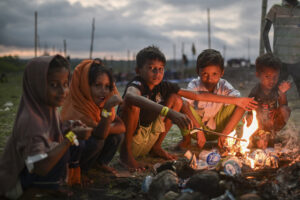
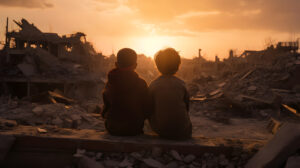

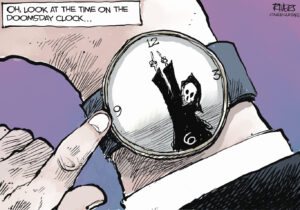
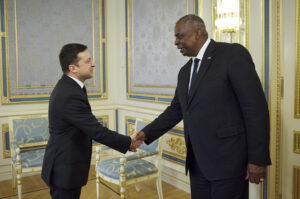
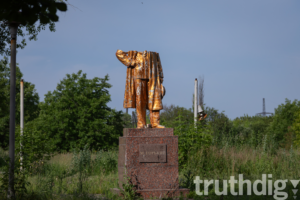
You need to be a supporter to comment.
There are currently no responses to this article.
Be the first to respond.